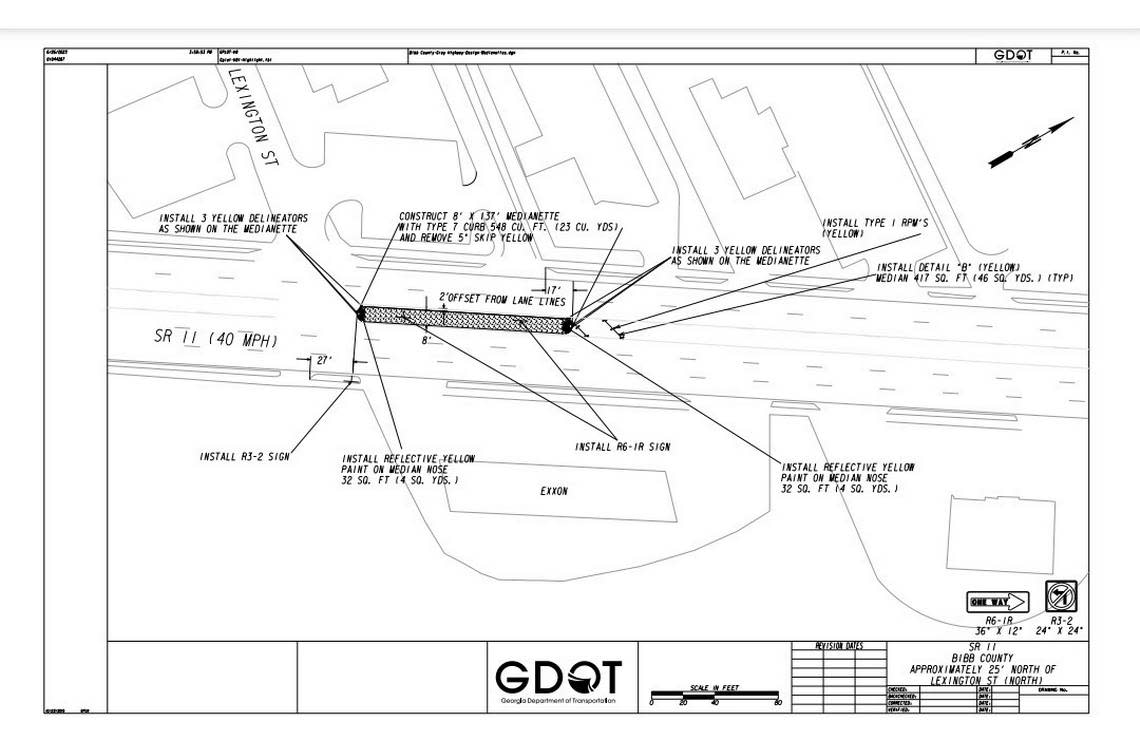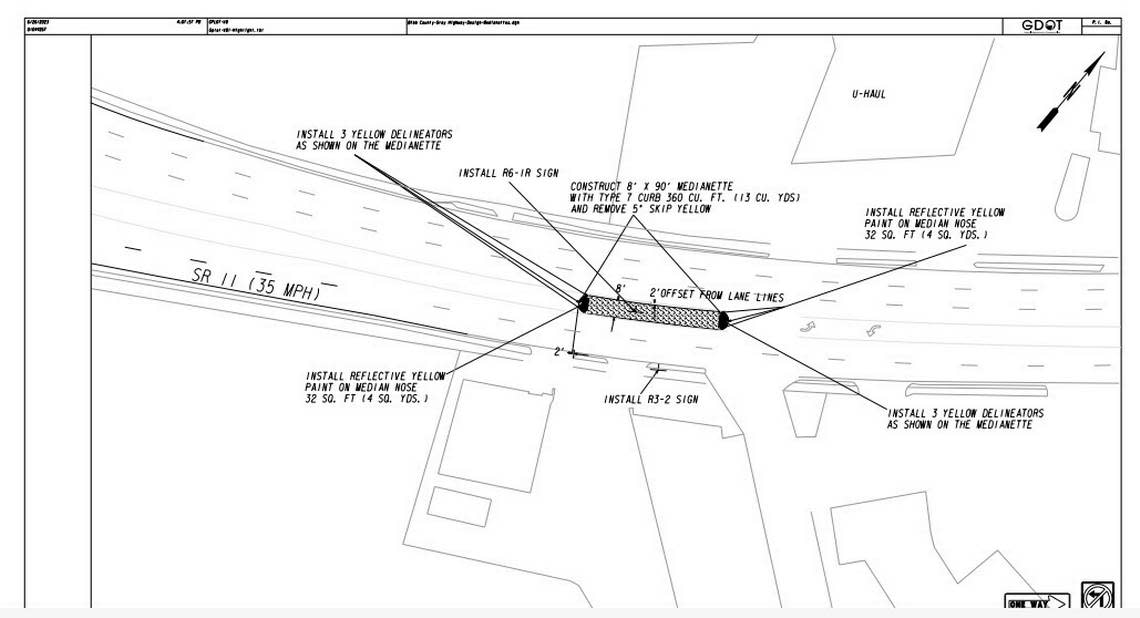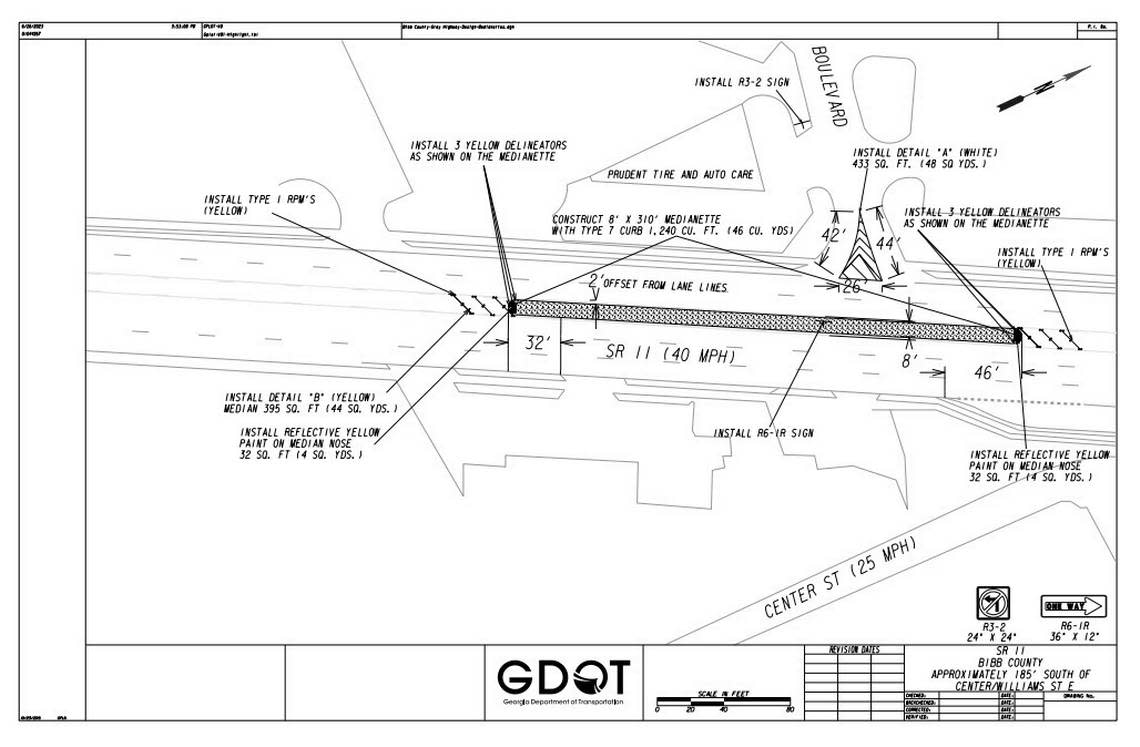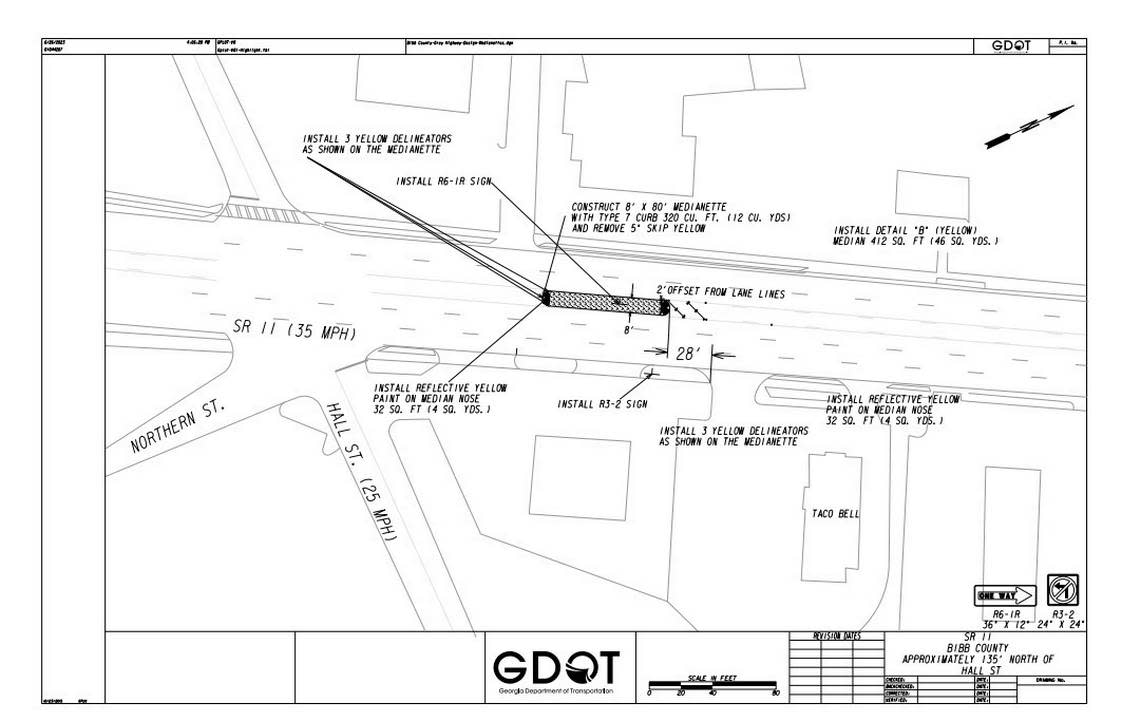Pedestrian crashes turn deadly in Macon more often. Official says it’s ‘preventable’
Reality Check is a Telegraph series digging deeper into key issues and focusing on accountability. Have a suggestion for a future story? Email mynews@macon.com.
Gray Highway in Macon is one of the deadliest road for pedestrians in the Georgia, and Macon-Bibb County ranks as one of the state’s worst for fatal pedestrian crashes.
About 7% of crashes involving a pedestrian in Macon in recent years wound up with the pedestrian dying, compared to 5% statewide, according to the Georgia Department of Transportation’s Pedestrian Safety Action Plan, which covers 2018 to 2022. Using data from 2011 to 2015, the state found that four pedestrians died on Gray Highway and five were seriously injured.
The plan features data from a total of 28 highways. Only six had a higher number of fatalities than Gray Highway and six had the same number of pedestrian fatalities. The highest number of pedestrian fatalities happened on Old National Highway in Fulton County.
In an effort to address this issue and others, the local government created a traffic safety manager position which Weston Stroud started in January.

The position was created to implement Macon-Bibb County’s Vision Zero Action Plan as well as Macon’s Complete Streets policy. Vision Zero is a strategy to eliminate all traffic fatalities and severe injuries, while increasing safe, healthy, equitable mobility for all.
Complete Streets Policies direct transportation planners and engineers to consistently design with drivers, public transportation vehicles and riders, pedestrians, bicyclists, older people, children, and people with disabilities in mind, according to Bike Walk Macon.
First implemented in Sweden in the 1990s, Vision Zero has proven successful across Europe and now it’s gaining momentum in major American cities, according to Stroud.

Stroud said the county adopted the Vision Zero Action Plan because it realized Macon-Bibb County experiences more vehicle pedestrian crashes than most counties.
“Macon-Bibb Vision Zero Action Plan affirms that traffic deaths are preventable, unacceptable, and human life takes priority over mobility and other objectives of the road system,” he said. “The street system should be safe for all users, for all modes of transportation, in all communities, and for people of all ages and abilities.”
DEATH ON THE ROAD
Stroud said Macon is unique in that it is a transportation node seeing nearly half a million people travel through the city daily.
“With such high traffic counts the likelihood of incidents occurring is higher than a typical community our size,” he said. “Gray Highway is specifically named on page 46 in the Georgia Department Of Transportation Pedestrian Safety Action Plan as being one of the Focus Corridors,” he said.
Stroud said Gray Highway is dangerous because there are infrequent opportunities to cross, and walkers must sometimes cross unsafe distances.

Moving from four to eight lanes with turn lanes or slip lanes also contributes to the danger for pedestrians.
Higher numbers of travel lanes contribute to higher speeds, more conflict points with pedestrians, and wider crossing distances, according to the GDOT Pedestrian Safety Action Plan.
Lack of a raised or separated median also causes increased danger for pedestrians. The plan says a median can play an important role in helping pedestrians cross the street, especially at locations not controlled by traffic signals.
The plan also cites a mix of high density residential or commercial uses on both sides of the road as an issue.
A dense mix of land uses enables and encourages people to walk to destinations. In areas with a greater proportion of zero car households and/or high transit use, the need to walk to access destinations is more pronounced, according to the plan.
FINDING A SOLUTION
At the state level, the Pedestrian Safety Action Plan lays out where action needs to take place. Officials then tailor each approach to each district and community, according to Stroud.
“At the local level the county hired a traffic safety manager, a role I stepped into earlier this year, to implement Vision Zero action items and Complete Streets principles as well as spearhead using design based solutions through the implementation of our Traffic Calming policy,” he said.

Stroud said there will be five medians down Gray Highway in the future. The state is still working to determine if there will be multiple control devices that help pedestrians cross higher-speed roads more safely.
MAKING SAFETY RESIDENTIAL
Stroud said the Traffic Engineering Department and the Pedestrian Safety Review Board are working on a Traffic Calming policy that will give local residents a chance to apply for a Traffic Calming project on their local residential street.
“This will bring pedestrian safety measures to neighborhoods,” he said. “Most of our roads where we experience the most vehicle pedestrian incidents are on state routes but if we can improve safety on residential streets then we can expand our efforts to other county owned roads where traffic safety interventions are feasible.”
Stroud said due to the nature of the issue, it will take time and money to make a positive impact.
“There are obvious disparities in East Macon caused by poor urban planning decisions like the misguided belief that simply widening roads will improve traffic to the more sinister efforts to redirect highways and road projects towards or through Black and minority communities,” he said.
“These efforts, rather done intentionally or accidentally, were done before most of our lifetimes so we find ourselves now trying to retroactively right our wrongs from a state and local level and that’s going to take time and money,” Stroud said.
